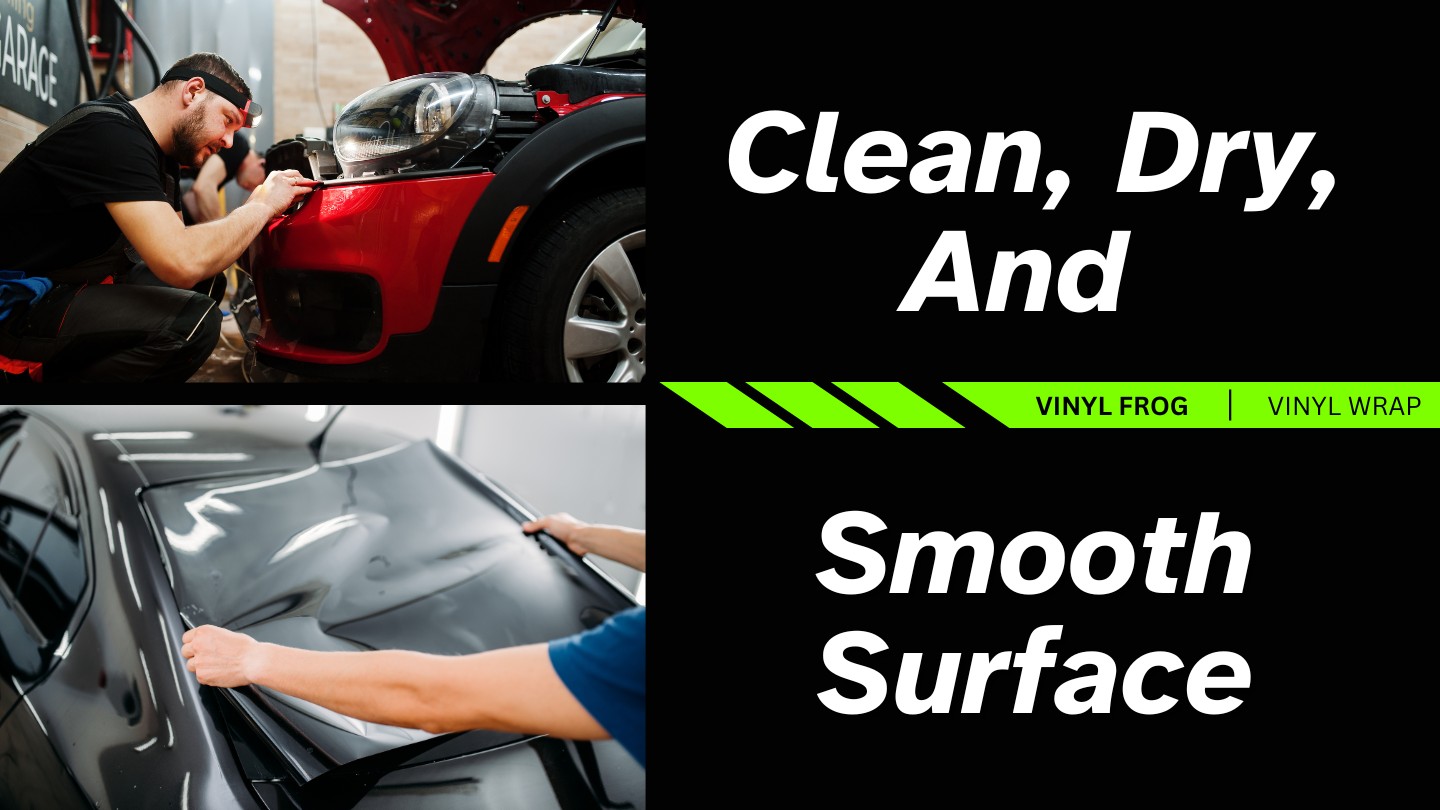So, you’re thinking about giving your car a fresh, new look with a vibrant vinyl wrap? You’ve seen the stunning transformations online and are tempted to ditch the expensive paint job for a DIY vinyl wrap project. But before you jump in headfirst, a crucial question lingers: Is It Hard To Wrap Your Own Car?
At cars.edu.vn, we understand the allure of personalizing your ride. Vinyl wraps offer a fantastic way to customize your vehicle’s appearance, offering a spectrum of colors and finishes that can turn heads. However, while the idea of a DIY car wrap is appealing, the reality can be more challenging than it seems. Let’s delve into the intricacies of car wrapping to help you gauge whether it’s a task you can confidently tackle yourself.
Vinyl wrapping isn’t just about slapping a giant sticker on your car. It’s a meticulous process that demands precision, patience, and a good understanding of the techniques involved. To achieve a flawless, professional-looking finish, several factors come into play. Let’s explore the key elements that determine the difficulty of wrapping your own car.
1. The Crucial First Step: Surface Preparation
Before even thinking about applying vinyl, the condition of your car’s surface is paramount. Imagine trying to wallpaper a wall that’s dusty, bumpy, and has peeling paint – the result would be far from perfect. The same principle applies to car wrapping. A pristine surface is non-negotiable for proper vinyl adhesion and a smooth finish.
Alt Text: Preparing a car for vinyl wrapping requires a clean, dry, and smooth surface free of contaminants for optimal vinyl adhesion.
This means you need to thoroughly clean your car to remove any contaminants like dirt, grime, and even wax residue. Wax, in particular, can hinder vinyl adhesion and lead to application failures. Beyond cleanliness, you must address any imperfections on your car’s body. Dents, rust, and peeling paint are enemies of a smooth vinyl wrap. These issues will show through the vinyl, creating an uneven and unprofessional appearance. In fact, they can even cause the vinyl to bubble or tear over time. Addressing these imperfections often requires professional bodywork before you even think about wrapping.
Areas like weather trims, cracks, and fenders are notorious for trapping wax and dirt, so meticulous cleaning in these areas is crucial. The surface must also be completely dry, as moisture will prevent the vinyl from adhering correctly. Achieving a truly clean, dry, and smooth surface is a significant undertaking and a critical first hurdle in the car wrapping process.
2. Planning and Precise Measurement: No Room for Guesswork
Accurate measurement and meticulous planning are essential steps that often get underestimated. You can’t simply eyeball the amount of vinyl you need. Precise measurements of each panel of your car are necessary to ensure you order enough material and cut the vinyl sheets correctly.
Alt Text: Careful planning and accurate measurement of car panels are crucial for determining the required vinyl and ensuring a seamless car wrap application.
Underestimating the vinyl needed can lead to frustrating shortages mid-project, while overestimating can result in unnecessary expenses. It’s always wise to order a bit extra – around two to three meters more than your calculated needs – to account for mistakes and complex curves. Accurate measurement isn’t just about saving material; it’s about ensuring you have correctly sized pieces for each section of your car, leading to a cleaner and more professional final result. This step requires patience and attention to detail, demanding more effort than many DIYers initially anticipate.
3. Gathering the Right Tools: Investing in Success
While the tools required for car wrapping are generally accessible, accumulating them represents an added cost to your DIY project. Having the right tools isn’t just about convenience; it’s about achieving a quality finish. Attempting to wrap a car without the proper tools is akin to building furniture without a screwdriver – possible, but significantly harder and likely to yield subpar results.
The essential toolkit includes items like:
- Squeegees and Scrapers: For smoothing out the vinyl and removing air bubbles.
- Wrap Stick Flex: For reaching into tight corners and applying pressure in curved areas.
- Heat Gun: Crucial for making the vinyl pliable and conforming to complex shapes.
- Infrared Thermometer: To monitor the vinyl temperature and prevent overheating or underheating.
- Surface Cleaner and Isopropyl Alcohol: For final surface preparation and cleaning edges.
- Microfiber Cloths: For lint-free cleaning and wiping.
- Small Magnets: To hold vinyl in place during application.
- Blades and Snitty Blades: For precise trimming and cutting of the vinyl.
- Tape Measure and Masking Tape: For accurate measurements and marking areas.
- Gloves: To keep hands clean and prevent fingerprints on the vinyl adhesive.
- Spray Bottle: For applying slip solution (water with a drop of soap) to aid in positioning the vinyl.
- Clay Bar: For removing stubborn contaminants during surface prep.
While these tools are available to purchase, understanding how to use each one effectively is another learning curve in itself. Investing in quality tools and learning their proper application is a vital part of ensuring a successful DIY car wrap.
4. Creating a Controlled Environment: Temperature and Cleanliness Matter
Vinyl is sensitive to environmental conditions, particularly temperature and cleanliness. Applying vinyl in direct sunlight, extreme heat, or cold temperatures can lead to application failures, poor adhesion, and a compromised finish.
Alt Text: A controlled environment with moderate temperature and free from dust and dirt is essential for successful car vinyl wrapping.
Ideally, car wrapping should be done in a garage or enclosed space with moderate, stable temperatures. Extreme temperatures can affect the vinyl’s pliability and adhesion properties. Furthermore, a clean, dust-free environment is crucial. Even tiny particles of dust or dirt can become trapped under the vinyl, resulting in bumps and imperfections that detract from the final look. Setting up a suitable workspace that meets these environmental requirements is another factor that adds to the complexity of DIY car wrapping.
5. Tackling Complex Body Parts: Curves and Contours
Modern cars are designed with intricate curves and contours. Wrapping these complex body parts is where DIY car wrapping becomes truly challenging and often requires a significant level of skill and experience.
Alt Text: Wrapping complex car parts, such as side mirrors, requires expertise and specific techniques for a seamless vinyl application.
Areas like bumpers, side mirrors, door handles, and fenders present unique challenges due to their shapes and curves. Vinyl needs to be stretched, heated, and manipulated to conform smoothly to these areas without wrinkles, bubbles, or creases. Some parts, like wing mirrors and door handles, are often easier to wrap when removed from the car. However, this adds another layer of complexity, requiring knowledge of how to safely remove and reinstall these parts without damage. Mastering the techniques for wrapping complex curves is a significant learning process and often the biggest hurdle for DIY car wrappers.
6. Time Commitment and Necessary Know-How: More Than Just a Weekend Project
Applying a vinyl wrap is not a quick and easy task. It’s a time-consuming process that demands focus, patience, and a significant time commitment. A full car wrap can easily take many hours, even days, to complete, especially for a beginner.
Alt Text: Car wrapping is a time-consuming process requiring patience, focus, and the right knowledge for successful DIY application.
Beyond the time investment, successful car wrapping requires specific knowledge and techniques. Understanding how different types of vinyl behave, how to properly heat and stretch the material, and mastering trimming and tucking techniques are all crucial skills. Even the final trimming and tucking of excess vinyl are critical for achieving a clean, professional finish. Rushing the process or lacking the necessary know-how can lead to mistakes, wasted material, and a less-than-desirable outcome.
Pros and Cons of DIY Car Wrapping
Before making a decision, it’s helpful to weigh the advantages and disadvantages of wrapping your car yourself.
The Upsides:
- Cost Savings: DIY car wrapping can be significantly more affordable than professional installation, primarily saving on labor costs.
Alt Text: Car wrapping is a cost-effective alternative to painting your car, offering significant savings and customization options.
- Personal Satisfaction: Completing a car wrap yourself can be a rewarding and satisfying DIY achievement.
- Customization Control: You have complete control over the entire process, from vinyl selection to application techniques.
- Unique Aesthetic: Vinyl wraps offer a wide array of colors, finishes, and textures, allowing for unique and personalized car aesthetics.
Alt Text: Car vinyl wraps provide a unique and customizable look for vehicles with diverse colors, finishes, and textures.
- Potential for Advertising: Vinyl wraps can be used for vehicle advertising, turning your car into a mobile billboard for your business.
Alt Text: Car wraps offer advertising opportunities, transforming vehicles into mobile billboards for businesses and promotions.
- Paint Protection and Originality Preservation: Vinyl wraps protect the original paint underneath, preserving your car’s resale value and allowing for easy removal to revert to the original look.
The Downsides:
- Steep Learning Curve: Car wrapping has a significant learning curve, and achieving professional-quality results takes time, practice, and patience.
- Risk of Mistakes: DIY attempts are prone to mistakes, which can lead to wasted material, imperfections, and a less-than-perfect finish.
- Time Intensive: As mentioned, DIY car wrapping is a time-consuming project.
- Potential for Damage: Using low-quality vinyl or improper techniques can potentially damage the original paint upon removal.
- Durability Concerns if Poorly Applied: A poorly applied wrap may be more susceptible to damage, peeling, and a shorter lifespan.
Alt Text: Low-quality vinyl wraps can pose a risk to the original car paint, potentially causing damage upon removal.
Frequently Asked Questions About DIY Car Wrapping
-
What are the hardest parts to wrap on a car? Smaller, intricate parts like bumpers, side mirrors, and door handles are generally considered the most challenging due to their complex shapes.
-
Is a wrapped car better than a repainted car? In many cases, yes. Vinyl wraps are often more cost-effective, offer greater design flexibility, protect the original paint, and can be removed without damaging the underlying surface.
-
How long does a car wrap last? The lifespan of a car wrap depends on factors like vinyl quality, climate, sun exposure, and maintenance. Generally, a good quality wrap can last for 2-3 years, or even longer with proper care.
-
Can you wash a wrapped car? Yes, wrapped cars can be washed, but hand washing with mild detergent is recommended. Avoid harsh chemicals or abrasive cleaning methods that could damage the vinyl.
The Final Verdict: Is DIY Car Wrapping Hard?
So, is it hard to wrap your own car? The answer is a resounding yes, especially if you’re aiming for a professional-quality finish. While DIY car wrapping is achievable, it’s not a weekend project for the faint of heart. It requires meticulous preparation, precise execution, the right tools, a controlled environment, and a significant investment of time and effort.
For those with patience, a knack for DIY projects, and a willingness to learn and practice, wrapping your own car can be a rewarding experience. However, if you’re looking for a guaranteed flawless finish and want to avoid the potential pitfalls of DIY, enlisting the services of professional car wrap installers is highly recommended. They possess the expertise, experience, and specialized equipment to ensure a perfect wrap, saving you time, frustration, and potential costly mistakes. Ultimately, the decision hinges on your skill level, time availability, budget, and desired outcome.


